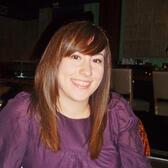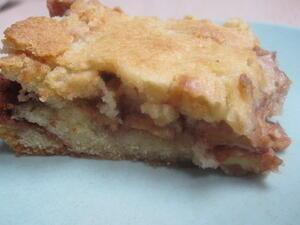Eating Jewish: Apple Cake
I don’t quite know how it happened, but the nights are getting cooler and there’s that feeling of fall in the air. Summer is winding down and with that comes the reds, yellow and orange colors of the changing leaves, thicker sweaters and of course the High Holidays. With the New Year almost upon us, attention is beginning to shift to the upcoming celebrations and of course what will be served at the festive meals that will be part of the holiday.
Rosh Hashanah is a time for reflection on the year that has passed, while also a time to look forward to the year to come in the hopes that it will be sweet and plentiful. This wish for the year to come is symbolically reflected in the foods served during this holiday in the hopes that they will help to bring about this desired outcome. Therefore, as explained by Claudia Roden, “The New Year is a time for sweet things. In some countries, even meat, chicken, and vegetable dishes are sweet. Potatoes are replaced by sweet potatoes, onions are caramelized, and meats are cooked with quince, prunes, dates, and raisins, and sometimes also with sugar or honey.” Challah takes on a circular shape and is studded with raisins to represent continuity and the hope that the New Year is round like a circle. Fish, which is a symbol of fertility, is often served with its head on in the hopes that one will remain at the head. Among the Sephardim, a sheep’s head is served in order to ensure “that they may always be at the head and not at the tail and hold their heads up high.” Ashkenazim also serve a dish of carrot tzimmes due to the fact that carrots have been associated with gold coins and in turn with prosperity and good fortune.
One of the other foods that play a central role in New Year meals include apples which make their appearance alongside honey in the iconic dish of apples dipped in honey, which is a mainstay on many tables. Apples are also a nice edition to the Rosh Hashanah table when baked into a delicious cake. The recipe for this cake comes from the cookbook, Second Helpings, Please! This cookbook was created by the women of the Mount Sinai Chapter of Jewish Women International of Canada in Montreal, and has become a classic in the kitchens of Canadian Jewish households. With fifteen printings since its first publication in 1968, it has become a popular gift for newly married couples and for young adults who are moving out for the first time. Filled with recipes that are quick and easy to prepare, this apple cake is a perfect example of why so many people love this cookbook. This cake is a cinch to make, with results that are extraordinary. You simply need to mix the together the ingredients for the batter, cut up the apples, sprinkle them with cinnamon and sugar and then spoon half the batter into a greased pan, spread the apples on top of this and put the rest of the batter on top. Once it comes out of the oven, the top will have turned a lovely golden brown, the apples, which will be soft and coated in cinnamon and sugar, will rest between the wonderfully moist cake batter.
This cake will delight with the classic combination of cinnamon, sugar and apples and will provide a sweet introduction to the New Year. This cake will not disappoint and will definitely have people asking for second helpings!
Apple Cake
From Second Helpings, Please!
2 eggs
1 cup sugar
3 teaspoons vanilla extract
½ cup oil
3 tablespoons water or orange juice
1 ½ cups all-purpose flour
2 teaspoons baking powder
¼ teaspoon salt
6-8 apples, peeled and thinly sliced
½ cup white or brown sugar
2 ½ teaspoons cinnamon
-
Beat eggs, sugar and vanilla until fluffy. Beat in oil.
-
Add liquid alternately with dry ingredients and beat until just smooth.
-
Spoon half of batter into a lightly greased 9-inch square baking pan. Spread evenly with a rubber spatula. Add apples, which have been sprinkled with sugar and cinnamon. Cover with remaining batter.
-
Bake at 350 degrees for 40 to 50 minutes, until nicely browned.








I like to sprinkle icing sugar on the top. Can I do this once it's cooled down or before baking? Also, how do I store it if I bake two days before serving. How to I keep the top from getting soggy?
Second helpings Apple cake recipe
Vanilla amount is wrong , should be 1 1/2 tsps vanilla
My roommate in college was from the Virgin Islands and not Jewish. New England fall was foreign for her as well as Rosh Hashanah. We had a little celebration in our tiny double, sitting on the floor sharing a repast of Granny Smith apples (no doubt liberated from the dining hall) and honey. If only we had had this cake, too!